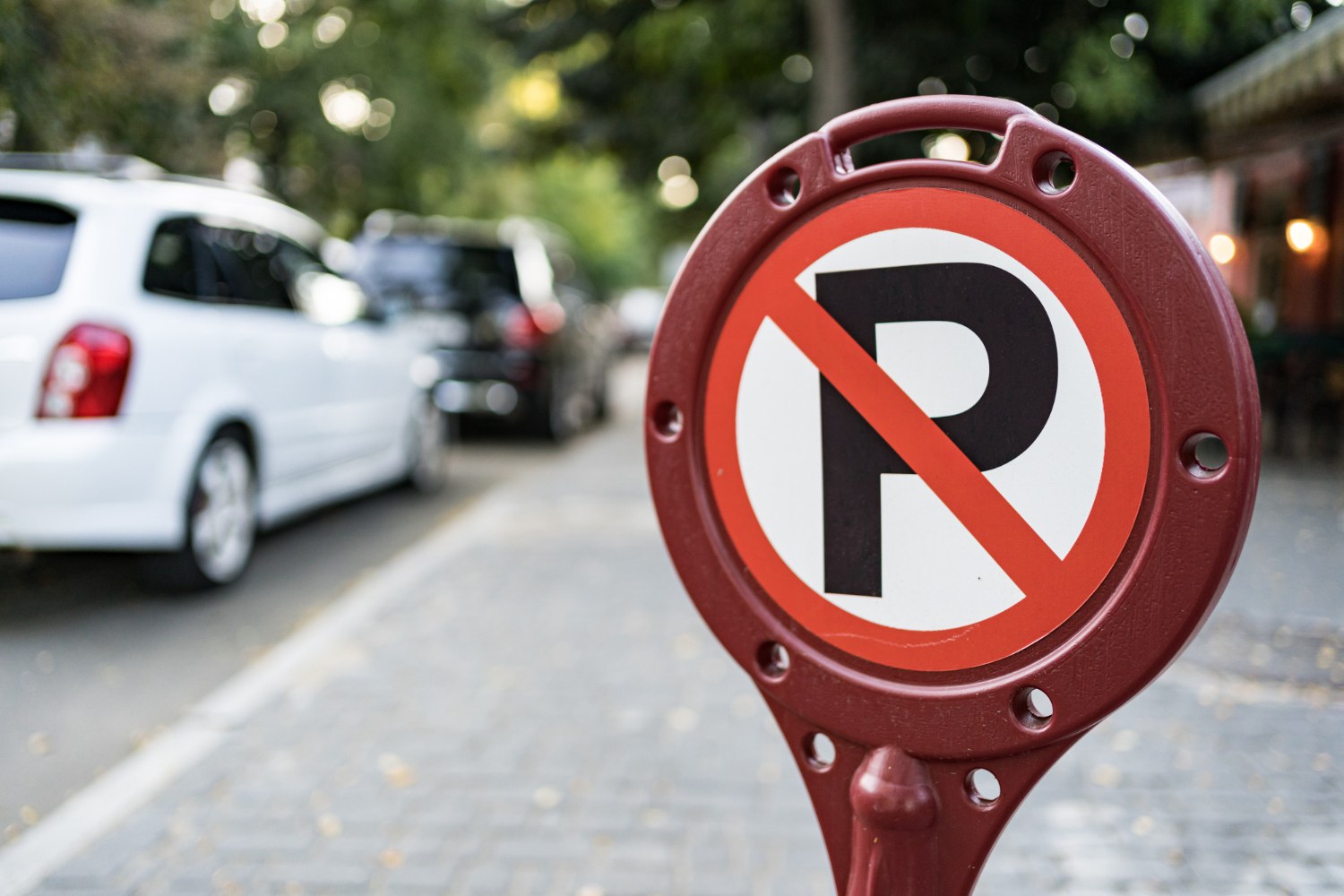Last Updated on 1 year by David Bergmann
Depending on where your new or old home is located, it may make sense to apply for a no-stopping zone before you move. Especially, if one of the apartments is located in a “blue zone”, where the parking of vehicles is limited in time, you should organize mobile no-parking signs. Find out how to apply for a no-stopping zone in Switzerland and what you need to bear in mind when doing so!
- Preparation & requirements
- Applying for the no-stopping zone
- Putting up the no-stopping signs
- Observe the traffic signs
1. Preparation & requirements
Find out, which authority in your canton or municipality is responsible for parking and administering parking bans. In most cases, it is the local road traffic authority or the cantonal police. In some cantons or municipalities (e.g. Basel-Stadt) it is also possible to apply for no-stopping signs online. Please note, however, that the deadline for online applications may differ from on-site applications.
Before you apply for a parking ban, you should also think about how much parking space you actually need. The best way to do this is to take the length of the moving van plus 3-5 meters for loading and unloading.
Tip: Many moving companies offer the organization of no-stopping signs as a service. Ask your moving company whether the parking ban can be organized and how much it costs.
2. Applying for the no-stopping zone
Contact the responsible authority in time before your moving date to apply for a stopping ban for the required parking spaces. Ideally, this should be done a few weeks in advance to allow sufficient time for the application to be processed.
When applying for the no-stopping signs, you must state the exact date of your move and the location of your old and new home. This allows the authorities to set up the no-stopping zone accordingly.
Requirements for approval:
- Timely order (may vary depending on the authority)
- Duration: Max. 3 days
- Parking spaces must be available or there must be sufficient space for the moving van; must not interfere with traffic
- Max. reservation area (max. 40 meters)
- Traffic safety must not be impaired
The responsible authority will then set up no-stopping signs at the desired parking spaces. This usually takes place one to two days before the day of the move. Make sure you have the permit for the no-parking zone on time to avoid problems.
Caution: Never create your own traffic signs for the desired parking zone, as this would violate the law (Stvo) and you risk a fine.
3. Putting up the no-stopping signs
As soon as you have received the signs from the authorities, you should reserve your desired parking space immediately. The deadline for installation may vary from canton to canton, but usually the no stopping signs must be installed at least 48-72 hours before the day of the move. The deadline is important, in order to inform cars parked in the planned no-parking zone in time and to give them the opportunity to re-park. As the day of installation is not considered a full day, we advise you to put up the signs four days before the move to be on the safe side.
When setting up the signs, you should make sure, that they are clearly visible and not obscured by other objects (e.g. trees). They should also be positioned in the direction of travel so that drivers can recognize them as they drive past.
You should note the date and time (from-to) of the stopping ban on the signs and, if possible, the reason (“moving house”).
Important: No-stopping signs must be placed on the sidewalk and not on the street! If sidewalks are narrow, putting up no-stopping signs can be a challenge under certain circumstances. You should maintain a certain minimum distance from the road and ensure a sufficiently wide passage on the sidewalk.
4. Observe the traffic signs
Make your moving helpers or the moving company aware of the no-stopping zone and make sure that the moving van is only parked in the designated zone. This means that everyone involved can work smoothly and unloading your furniture and boxes goes without a hitch. Parking in another no-parking zone can not only lead to a fine, but also to your vehicle being towed away.
If a stranger parks his or her vehicle in your no-stopping zone and interferes with the furniture transport, it is best to contact the cantonal police to arrange for the illegally parked car to be towed away.
Tip: If you have any questions or uncertainties about stopping bans and parking during the move, you can always contact the relevant police station or the road traffic authority in your canton.
Conclusion:
Applying for a stopping ban for your moving van can save you a lot of stress and hassle. By following these steps and planning well in advance, you can ensure that your move goes smoothly and you can concentrate fully on arriving in your new home.

Leave a Reply